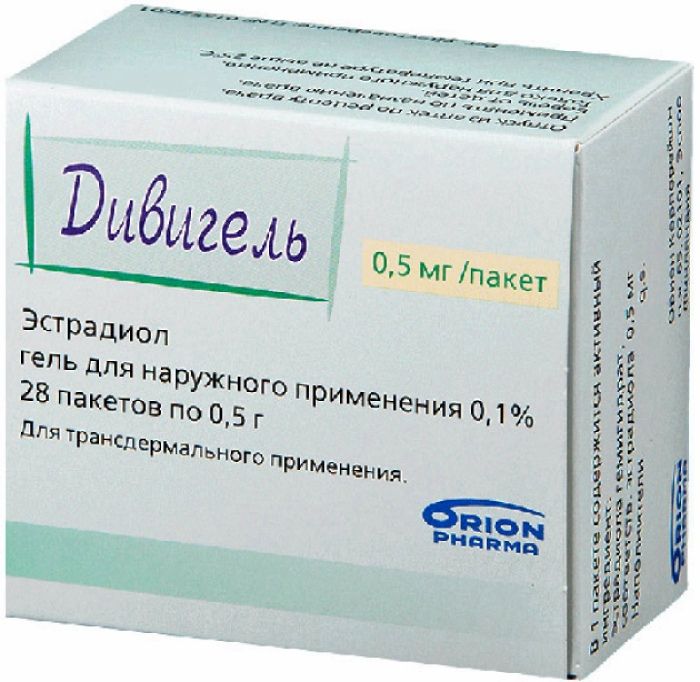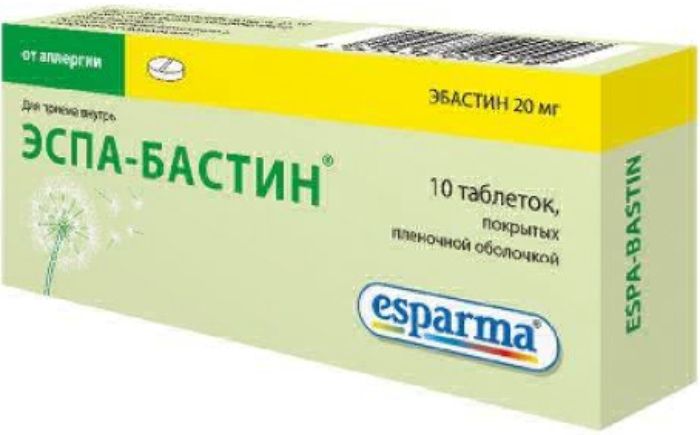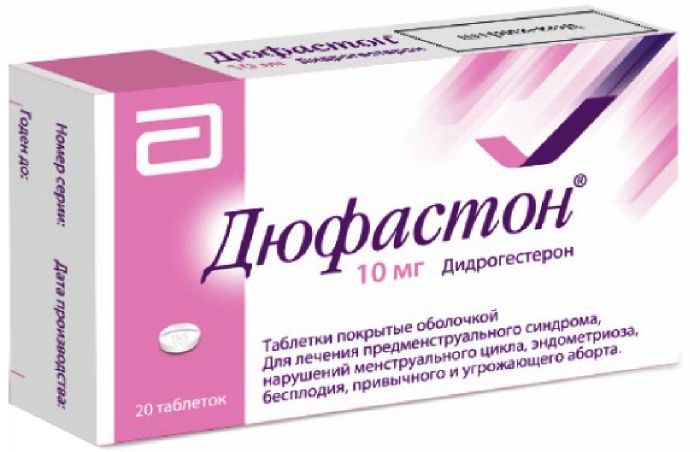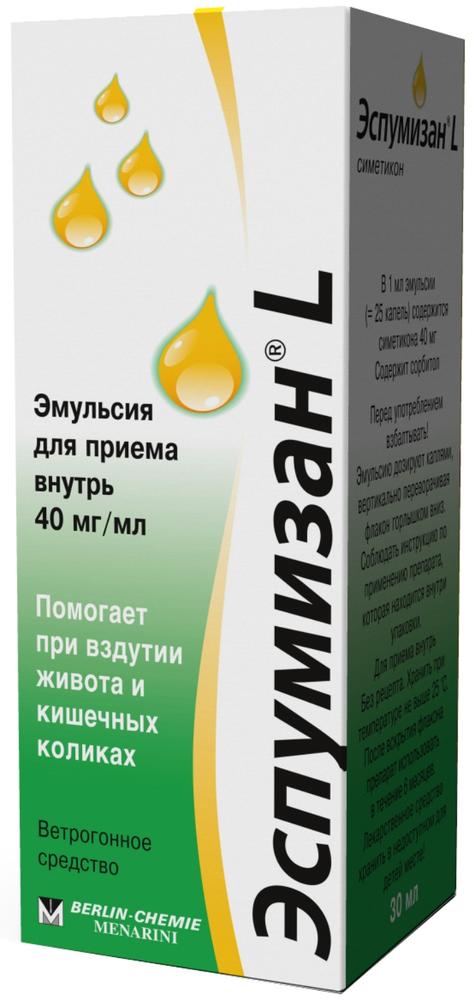- No products in the cart.
Divigel gel appearance. 0.1% 0.5g pack. 28 pc
$12.88
Divigel gel appearance. 0.1% 0.5g pack. 28 pc
Description
Composition
Active substance:
1 g of gel contains: estradiol hemihydrate, estradiol 1 mg corresponds ;.
Excipients:
Carbomers (Carbopol 974 P), trolamine, propylene glycol, ethyl alcohol (96%), purified water to 1.0 g
Description:
Homogeneous opalescent gel.
Product form:
Primary package: 0.5 or 1.0 g of gel in a single-dose packages from a laminated three-layer aluminum (inner layer – polyethylene, middle layer – aluminum, outer layer – polyester).
Secondary packaging: 28 or 91 single-dose package in a cardboard box with instructions for use enclosed.
Contraindications
Increased sensitivity to estradiol and / or any of the excipients of the drug.
breast cancer (diagnosed, suspected or history).
Diagnosed or suspected estrogen-dependent malignant tumors of the genital organs (including endometrial cancer). – vaginal bleeding of unknown etiology.
Untreated endometrial hyperplasia.
Identified acquired or inherited predisposition to venous or arterial thrombosis, including antithrombin III deficiency, protein C deficiency, protein deficit S).
Venous thrombosis and thromboembolism present or in history (including thrombosis and deep vein thrombophlebitis, pulmonary embolism).
Active or recently transferred arterial thromboembolic disease (including angina, myocardial infarction).
Congenital hyperbilirubinemia (Gilbert syndrome, Dubin-Johnson syndrome, Rotor).
Benign or malignant liver tumors currently or history.
Cholestatic jaundice or severe cholestatic pruritus (including the strengthening of their displays during previous pregnancy or while taking sex drugs).
Acute liver disease or having a history of liver disease when liver function test results are not returned to normal.
Porphyria.
Precautions should be used drug Divigel in such diseases as hysteromyoma, endometriosis, the presence of risk factors for thromboembolic disorders, the presence of risk factors for estrogen dependent tumors (breast cancer among relatives first relationship lines), arterial hypertension, liver disease (including adenoma liver) with normal values of liver function tests, diabetes mellitus with or without diabetic angiopathy, cholelithiasis, migraine or severe headache, systemic lupus erythematosus, hyperplasia Endometrial a history of epilepsy, asthma, otosclerosis, heart failure, kidney failure, coronary heart disease (CHD), sickle cell anemia, a history of chloasma, hypertriglyceridemia a history of hereditary angioedema. Experience of use in women older than 65 years is limited.
Dosage
0.1%
Indications
Hormone replacement therapy for estrogen deficiency symptoms; treatment of menopausal symptoms associated with natural or artificial menopause, which developed as a result of surgery.
Interaction with other drugs
Estradiol metabolism is accelerated by the simultaneous reception with barbiturates, tranquilizers (anxiolytics), narcotic analgesics, anesthetics, some antiepileptic drugs (carbamazepine, phenytoin), inducers of hepatic microsomal enzymes; herbal preparations containing St. John’s wort. The concentration of estradiol in the blood is also reduced by the simultaneous use phenylbutazone and some antibiotics and antivirals (ampicillin, rifampicin, rifabutin, nevirapine, efavirenz). Ritonavir and nelfinavir, also known as a strong inhibitor, when combined with sexual hormones, in contrast, exhibit inducing properties. The action of estradiol is enhanced in patients receiving folic acid and thyroid hormone drugs. When transdermal administration avoids the effect of “primary” pass through the liver thus, the effect of drugs for transdermal application of HRT with estrogens, perhaps to a lesser extent than after oral application depends on the action of microsomal liver enzyme inducers. In clinical practice, enhanced metabolism of estrogens may lead to a weakening effect and changes in the nature of uterine bleeding.
Estradiol: increases the effectiveness of lipid-lowering agents; weakens the effect of the drugs in male sex hormones; hypoglycemic, diuretic, antihypertensive drugs and anticoagulants.
Overdose
Symptoms: breast pain, anxiety, irritability, nausea, vomiting, and in some cases – metrorrhagia. When transdermal application overdose unlikely.
Treatment – symptomatic. The gel should be washed from the skin. Symptoms disappear or at lower doses to remove the drug.
pharmachologic effect
Pharmacological group:
Estrogen.
Pharmacodynamics:
Active substance formulation Divigel, synthetic 17b-estradiol, chemically and biologically identical to endogenous human estradiol produced in the body ovariectomized women, since menarche and up to the menopause. Estrogens are complexed with specific receptors which have been found in cells of various target organs – in the uterus, vagina, urethra, breast, liver, hypothalamus, pituitary. Receptor-ligand complex interacts with estrogen-effector elements genome and specific intracellular proteins, inducing synthesis and RNA, proteins and the release of cytokines and growth factors. It has feminizing effects on the body. Stimulates the development of the uterus, fallopian tubes, vagina, stromal and ductal mammary pigmentation in the area of the teats and genitals, formation of secondary sexual characteristics of female type, height, and the closing of the epiphyses of long bones. Rejection facilitates timely and regular endometrial bleeding, in high concentrations causes endometrial hyperplasia, suppresses lactation, inhibits bone resorption, stimulate the synthesis of several transport proteins (thyroxine-binding globulin; transcortin, transferrin, globulin, sex hormone binding), fibrinogen. Has procoagulant action, increases the synthesis of hepatic vitamin K-dependent coagulation factors (II, VII, IX, X), reduces the concentration of antithrombin III. Increases concentration of thyroxine in the blood, iron, copper and others. It has antiatherosclerotic action, increases the amount of HDL, LDL, and reduces cholesterol, triglycerides concentration increases. Modulating progesterone receptor sensitivity and sympathetic regulation of smooth muscle tone, stimulates transition intravascular fluid in the tissue and causes a compensatory sodium and water retention. In large doses, it prevents the degradation of endogenous catecholamines, competing for active receptors catechol-O-methyltransferase. After menopause, the body is formed only a small amount of estradiol (of estrone present in liver and adipose tissue). Decreasing the amount of estradiol produced by the ovaries is accompanied by many women and thermoregulatory vasomotor instability ( “hot flashes” of blood to the skin of the face), sleep disorders, and progressive atrophy of the mucosa of the urogenital tract. As a consequence of estrogen deficiency develops osteoporosis (primarily the spine). After ingestion greater amount of estradiol before getting into the bloodstream, it is metabolized within the lumen (microflora) and the intestinal wall, and also in liver (leading to unphysiologically high concentrations of estrone in plasma, and for long-term therapy – to cumulation of estrone and estrone sulfate) . The consequences of accumulation of metabolites in the body for a long time has not yet been clarified. It is known that oral administration of estrogen causes an increase in protein synthesis (including renin), which leads to increased blood pressure (BP).
Pharmacokinetics:
Divigel formulation is a gel for topical use on the basis of alcohol. When applied to the skin the alcohol evaporates rapidly and estradiol penetrates the skin, getting into the bloodstream. Application of the preparation on Divigel 200-400 cm2 area (size of one or two hands) does not affect the amount of absorbed estradiol. However, if the drug Divigel applied to a large area, the extent of absorption is greatly reduced. To some extent, estradiol is retained in the subcutaneous tissue, where it occurs gradual release into the bloodstream. Transdermal application avoids the hepatic metabolism first stage, whereby fluctuations in plasma oestradiol concentration when applying Divigel preparation insignificant. Transdermal administration of 0.5, 1.0 and 1.5 mg estradiol (0.5, 1.0 and 1.5 grams of the drug Divigel) is accompanied by a mean Cmax maximum plasma concentration of 143, 247 and 582 pmol / l, respectively. Mean concentrations for Caverage interval between doses are 75, 124 and 210 pmol / l, respectively. Mean Cmin minimum concentration up 92, 101 and 152 pmol / l, respectively. Against the background of the drug Divigel ratio estradiol / estrone maintained at from 0.4 to 0.7, whereas the use of oral estrogens is typically reduced to
Pregnancy and breast-feeding
Divigel drug is not indicated for use during pregnancy. If during treatment with Divigel pregnancy occurs, treatment should be discontinued immediately. The results of most epidemiological studies conducted to date, concerning accidental exposure of estrogens on the fruit, do not indicate a teratogenic or foetotoxic effect. Preparation Divigel not indicated during breastfeeding.
Conditions of supply of pharmacies
By prescription.
side effects
During the first few months of treatment may experience “breakthrough” bleeding, “smearing” spotting and tenderness or breast enlargement. As a rule, these effects are transient and usually disappear with continued treatment. Adverse drug reactions were reported, particularly in the three phase III clinical trials. Listed below are unwanted drug reactions noted in clinical studies (only those cases which have possible connection with transdermal administration of estradiol in a dose of 50 ug or 100 ug per day) as well as unwanted dosage response observed in a post-marketing period. In general we can expect that the dosage unwanted reactions can occur in 76% of patients. In clinical studies local reactions and breast pain occurred more than 10% of patients
The incidence of side effects of the drug is considered as follows:
Common:> 1/100, 1/1000,
special instructions
In the treatment of the symptoms of post-menopausal hormone replacement therapy should be initiated only with the symptoms that adversely affect quality of life. It should be at least once a year to carry out a detailed assessment of the risks and benefits of HRT and appoint only if the benefit outweighs the risk. Data concerning the risks associated with HRT in the treatment of early menopause is limited. However, given the low absolute risk of HRT in younger women, the ratio of benefits and risks in these women may be more favorable than in older women. Before the start or re-appointment of HRT should provide a complete personal and family history. It is necessary to carry out a medical examination in order to identify possible contraindications and complying with the necessary precautions while taking the drug (including examination of the pelvic organs and mammary glands). During the treatment it is recommended to conduct periodic surveys, frequency and methods belonging to it, are determined for each case individually. Investigations including mammography should be carried out in accordance with accepted standards and are adapted to the individual clinical needs of each individual case. During the reception, the patient HRT should conduct a thorough evaluation of all the benefits and risks of therapy.
Conditions that require monitoring If any of the following conditions are present, have met earlier and / or exacerbate during pregnancy or previous hormone treatment, the patient should be under constant medical supervision. It should be taken into account that these conditions may, in rare cases, recur or worsen during treatment with Divigel, such as: uterine fibroids or endometriosis; risk factors for thromboembolic disorders; Risk factors of estrogen dependent tumors (having relatives first line relatives with breast cancer); arterial hypertension; liver disease (e.g., adenoma of the liver); diabetes mellitus with or without diabetic angiopathy; cholelithiasis; migraine and / or severe headache; systemic lupus erythematosus; endometrial hyperplasia in history; epilepsy; bronchial asthma; otosclerosis, hereditary angioedema
Reasons for immediate discontinuation of therapy
Therapy should be discontinued if the detected contraindications and / or in the following situations: jaundice or impairment of liver function; pronounced rise in blood pressure; newly emerging attacks migraine headaches; pregnancy.
Hyperplasia and endometrial cancer
The risk of hyperplasia and endometrial cancer increases with estrogens for a long time. According to reports, the risk of endometrial cancer in women who use only estrogen, increases in 2-12 times compared with women who do not apply estrogens, depending on the duration of treatment and estrogen dose. After cessation of treatment at increased risk may persist for at least 10 years. To reduce the level of risk should be combined estrogen therapy in women with a uterus with unremoved progestin for at least 12 days during the treatment cycle or take combined estrogen-progestin drugs continuously. During the first months of treatment may experience “breakthrough” bleeding and “spotting” spotting. If the “breakthrough” bleeding or “spotting” spotting appears after some time of therapy, or continues after discontinuation of treatment, it is necessary to conduct a survey to determine the cause, including endometrial biopsy (to rule out endometrial cancer). Use of HRT containing estrogen alone can lead to premalignant or malignant transformation residual foci of endometriosis. Thus, women who have undergone hysterectomy because of endometriosis, it is necessary to provide for the addition of progestogens to estrogen replacement therapy for the prevention of endometrial cancer, if it is known that they have residual endometriosis.
Mammary cancer
The available data generally indicate an increased risk of breast cancer in women receiving combined estrogen-progestin drugs and possibly also preparations for HRT containing estrogen only; This risk depends on the duration of use of HRT
The use of combined estrogen-progestin HRT: a randomized placebo-controlled study (study on “Women’s Health Initiative», WHI) and epidemiological studies obtained matching data of an increased risk of breast cancer in women receiving combined estrogen-progestogen HRT; increased risk was detected after about 3 years of treatment.
Use of HRT, estrogen only containing: a WHI study found no increased breast cancer risk among women who have undergone hysterectomy and applying HRT preparations containing estrogen only. In observational studies, in most cases, it reported a slight increase in the risk of diagnosis of breast cancer, which is significantly lower than in women using combined estrogen and progestogen. Additional risk begins to manifest after several years of treatment, but returned to baseline within a few (at most five) years after stopping treatment. HRT, especially combined estrogen-progestin medications increases the density of mammographic images which can prevent X-ray detection of breast cancer.
ovarian cancer
Ovarian cancer occurs less frequently than breast cancer. Epidemiological data obtained from a large meta-analysis indicated a slightly increased risk in women taking estrogen monopreparations or combined estrogen-progestogen HRT; the risk becomes clear within 5 years of application and decrease with time after stopping. Several other studies, including WHI study suggest that the combined use of HRT may be associated with the same or slightly smaller risk (see. Side effect profile).
thromboembolism
In women treated with HRT have a higher risk of developing venous thromboembolism (VTE), in particular deep vein thrombosis or pulmonary embolism, compared with women not receiving hormone replacement therapy, in 1,3-3 times. The probability is higher in the first year of HRT than in subsequent years. Основные факторы риска: индивидуальный или семейный анамнез, применение эстрогенов, серьезные операции, длительная иммобилизация, выраженное ожирение (индекс массы тела более 30 кг/м2 ), системная красная волчанка, пожилой возраст, беременность и послеродовый период, злокачественные новообразования. Нет единого мнения о возможной роли варикозного расширения вен в развитии ВТЭ. Риск ВТЭ повышается при длительной иммобилизации, обширных травмах или обширных хирургических вмешательствах. Прием препаратов для ЗГТ должен быть прекращен за 4-6 недель до планируемых хирургических операций на органах брюшной полости или ортопедических операций на нижних конечностях. Лечение может быть возобновлено после полного восстановления двигательной способности. Женщинам, не имеющим ВТЭ в анамнезе, но имеющим родственников первой линии родства, перенесших тромбозы в молодом возрасте, скрининг можно предложить после подробного обсуждения его ограничений (при скрининге выявляются лишь некоторые тромбофилические расстройства). Если выявляется тромбофилическое расстройство, проявлявшееся тромбозами у членов семьи, а также при наличии «тяжелых» дефектов (таких как дефицит антитромбина, протеина S или протеина С, или комбинации дефектов), проведение ЗГТ противопоказано. У женщин, уже получающих постоянное лечение антикоагулянтами, требуется тщательная оценка соотношения пользы и риска ЗГТ. Если после начала лечения развивается ВТЭ, препарат следует отменить. Пациенткам следует указать на необходимость немедленно связаться с врачом при появлении потенциальных симптомов тромбоэмболии (болезненность и/или отечность нижней конечности, внезапные боли в грудной клетке, одышка).
Ишемическая болезнь сердца
В рандомизированных контролируемых исследованиях не получены данные о профилактическом эффекте в отношении инфаркта миокарда у женщин с или без ИБС, которые получали комбинированные эстроген-гестагенные препараты для ЗГТ или только эстрогены
Применение комбинированных эстроген-гестагенных препаратов для ЗГТ: при применении комбинированных эстроген-гестагенных препаратов для ЗГТ отмечается небольшое увеличение относительного риска ИБС. Поскольку исходный абсолютный риск ИБС в значительной степени зависит от возраста, число дополнительных случаев ИБС, обусловленных применением эстрогенов в сочетании с гестагенами, у здоровых женщин, приближающихся к менопаузе, крайне мало, однако увеличивается с возрастом
Применение препаратов для ЗГТ, содержащих только эстроген: в рандомизированных контролируемых исследованиях не получено данных о повышении риска ИБС у пациенток, перенесших гистерэктомию и получающих препараты для ЗГТ, содержащие только эстроген.
Ишемический инсульт
ЗГТ комбинированными эстроген-гестагенными препаратами и только эстрогенами связана с повышением риска ишемического инсульта почти в 1,5 раза. Относительный риск не меняется с возрастом и в зависимости от времени, прошедшего после наступления менопаузы. Однако, поскольку исходный риск инсульта в значительной степени зависит от возраста, общий риск инсульта у женщин, получающих ЗГТ, будет увеличиваться с возрастом
Нарушение функции почек
Эстрогены вызывают задержку жидкости в организме. Пациентки с сердечной или почечной недостаточностью должны находиться под постоянным наблюдением врача.
Diabetes
Эстрогены повышают чувствительность к инсулину и увеличивают его выведение. Пациенткам с сахарным диабетом в первые месяцы ЗГТ показан постоянный контроль концентрации глюкозы в крови.
Желчнокаменная болезнь
Прием эстрогенов повышает риск возникновения желчнокаменной болезни
Гипертриглицеридемия
Необходимо внимательное наблюдение при проведении ЗГТ у женщин с гипертриглицеридемией в анамнезе, поскольку при этом состоянии на фоне терапии эстрогенами описаны редкие случаи резкого повышения концентрации триглицеридов в плазме, приводящие к развитию панкреатита.
Влияние на функцию щитовидной железы
Эстрогены повышают концентрацию тироксинсвязывающего глобулина, приводя к увеличению общей концентрации циркулирующих гормонов щитовидной железы
Хлоазма
В некоторых случаях может развиваться хлоазма, в особенности у женщин, имеющих в анамнезе хлоазму во время беременности. Женщинам, имеющим склонность к развитию хлоазмы, на фоне применения ЗГТ следует свести к минимуму воздействие солнечного или ультрафиолетового облучения
Влияние на когнитивную функцию
ЗГТ не улучшает когнитивную функцию. Отмечается некоторое повышение риска развития деменции при начале ЗГТ в возрасте старше 65 лет. Препарат Дивигель не является контрацептивным средством, во время приема препарата необходимо применять адекватные негормональные методы контрацепции.
Effects on ability to drive vehicles and management mechanisms
Does not affect.
Storage conditions
Хранить препарат при температуре не выше +25°С.
Хранить в местах, недосягаемых для детей.
Dosing and Administration
Препарат Дивигель – гель для трансдермального применения. Препарат Дивигель может применяться для длительной и циклической терапии. Обычная стартовая доза составляет 1,0 мг эстрадиола (1,0 г геля соответственно) в сутки, но выбор начальной дозы может основываться на выраженности симптомов. В зависимости от клинической картины доза может быть изменена после 2-3 циклов индивидуально от 0,5 г до 1,5 г в день, что соответствует от 0,5 до 1,5 мг эстрадиола в сутки. В начале и при продолжении лечения симптомов постменопаузы следует применять наименьшую эффективную дозу в течение наименее продолжительного периода. Применение препарата Дивигель без добавления гестагена возможно только у пациенток с удаленной маткой.
Пациенткам с «интактной» (неоперированной) маткой во время лечения препаратом Дивигель рекомендуется назначать гестаген – не менее 12-14 дней подряд в течение месяца или 28- дневного цикла. После курсового применения гестагена должно наступить менструальноподобное кровотечение. При внеочередных или длительных маточных кровотечениях следует обязательно установить причину их возникновения. У женщин, перенесших гистерэктомию, добавление гестагена при отсутствии в анамнезе эндометриоза не рекомендуется.
У женщин, не применявших ранее препараты для заместительной гормональной терапии (ЗГТ), и у женщин, переходящих на препарат Дивигель с комбинированного препарата для ЗГТ с непрерывным режимом приема, лечение препаратом Дивигель можно начинать в любой удобный для пациентки день. У женщин, переходящих на препарат Дивигель с непрерывной последовательной схемы ЗГТ, лечение следует начинать после завершения предыдущей схемы.
Если пациентка забыла нанести гель, следует сделать это как можно скорее, однако не позднее, чем в течение 12 часов с момента нанесения препарата. Если прошло более 12 часов, то нанесение препарата Дивигель стоит отложить до следующего раза. При нерегулярном применении препарата (пропущенные дозы) могут возникнуть «прорывные» кровотечения и «мажущие» кровянистые выделения.
Mode of application
Гель обычно наносится 1 раз в сутки на чистую сухую кожу нижней части передней стенки живота, поясничной области, плеч, предплечий, либо поочередно на правую или левую ягодицы, ежедневно чередуя места нанесения. Препарат Дивигель не следует наносить на молочные железы, лицо, область половых органов, а также на раздраженные участки кожи. Площадь нанесения должна быть равна по величине 1-2 ладоням. После нанесения препарата следует подождать несколько минут, пока гель не подсохнет (2-3 мин). Место нанесения геля нельзя ополаскивать в течение 1 часа. Следует избегать случайного попадания препарата Дивигель в глаза. Следует вымыть руки сразу же после нанесения геля.
Дополнительная информация для особых групп пациенток
Опыт применения препарата Дивигель у женщин старше 65 лет ограничен. Показания к применению препарата Дивигель у детей отсутствуют.
Information
Appearance may differ from that depicted in the picture. There are contraindications. You need to read the manual or consult with a specialist
Additional information
| Weight | 0.100 kg |
|---|---|
| Manufacturer | ORION |













There are no reviews yet.